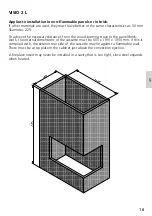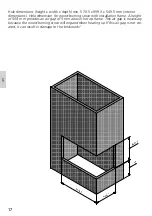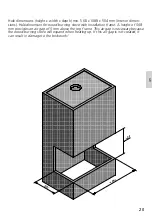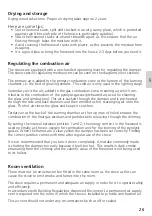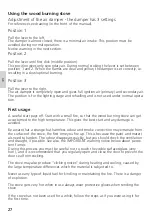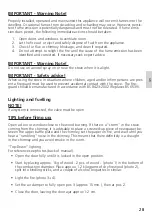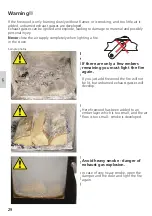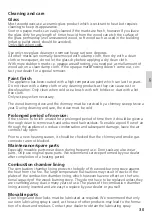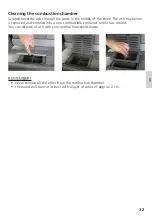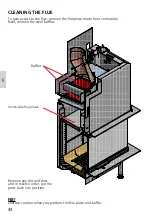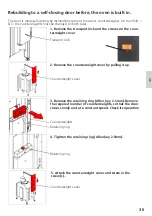
27
27
Using the wood burning stove
Adjustment of the air damper - the damper has 3 settings
For reference see drawing (in the front of the manual).
Position 1
Pull the lever to the left
.
The damper is almost closed; there is a minimal air intake. This position must be
avoided during normal operation.
Notice warning in the next section.
Position 2
Pull the lever until first click (middle position).
This position gives only secondary air. During normal stoking the lever is set between
position 1 and 2. When the flames are clear and yellow, the damper is set correctly, i.e.
resulting in a slow/optimal burning.
Position 3
Pull the lever to the right.
The air damper is completely open and gives full ignition air (primary) and secondary air.
The position is for the lighting stage and refuelling and is not used under normal opera-
tion.
First usage
A careful start pays off. Start with a small fire, so that the wood burning stove can get
accustomed to the high temperature. This gives the best start and any damage is
avoided.
Be aware that a strange but harmless odour and smoke concoction may emanate from
the surface of the stove, the first time you fire up. This is because the paint and materi-
als need to harden. The odour disappears quickly, but you should check the ventilation
and draught, if possible. See also, the IMPORTANT warning notice below about persis-
tent fumes.
During this process you must be careful not to touch the visible surfaces/glass (very
hot!), and it is recommended that you regularly open and close the door to prevent the
door seal from sticking.
The stove may also produce “clicking noises” during heating and cooling, caused by
the large temperature differences which the material is subjected to.
Never use any type of liquid fuel for kindling or maintaining the fire. There is a danger
of explosion.
The stove gets very hot when in use always wear protective gloves when tending the
stove.
If the stove has not been used for a while, follow the steps as if you were using it for
the first time.
GB




